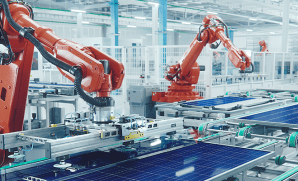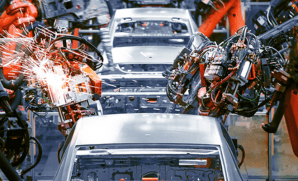Future Factory: How Digital Technology is Transforming Manufacturing
Publish Date: September 27, 2019The Middle East continues to experience unprecedented demand for its manufacturing supply base. One of the most incisive analyses of the region’s readiness for the future of next-gen IT and the 4th industrial revolution is its acceptance and open-mindedness about emerging technologies like artificial intelligence (AI), automation and IoT. These technologies have brought the world’s best manufacturing processes to a new confluence of relevance and competitiveness, which has taken the industry itself to a new high on its economic growth agenda.
A recent PWC report estimated that AI could contribute as much as USD 320 billion to the Middle East economy by 2030, equalling almost 11 percent of its GDP. The significance of the impact expected from new technologies in the GCC will be greater if the government continues to push the boundaries of innovation across businesses and sectors. There will be challenges, but technology will be vital to solving all those issues.
Technology is the oxygen to manufacturing efficiency
Free trade in this globalized, knowledge-sharing world interwoven supply chains around the world today remain unhindered. Today if Souq.com, a famous e-commerce player in the Middle East, can deliver products within the same day, it is because of improved focus on consumer-friendly prices and digitization. Industrial manufacturing as well can use labour arbitrage to keep product prices and production costs low, while at the same time adding consumer-friendly add-ons like IoT (to gather, monitor and analyze data), tracking in real-time for shipments and other consumer-facing communication platforms.
There are several real-world success-stories on Factory platforms that merge process, people and technology creating a ”single-version-of-truth” for decision-makers through the entire supply chain. The live data drives real-time, ”in-the-moment” knowledge and pointed insights from the shop floor to the top floor. Tools to enable asset management have now sprung analog factories and introduced them to the world of Industry 4.0, by not only classifying their machinery and assets but also capturing the criticality and failure modes to develop an accurate live-condition-based, predictive maintenance monitoring systems.
Businesses can no longer rely on manual spreadsheets or notepads to keep track of inventory and assets because they want to get ahead of the problem by acting predictively. There is now a sense of urgency among manufacturers to seriously invest in some operational enhancements that would modernize their factory-floors, embed seamless connectivity among resources including product designing, production, procurement, warehousing, and even shipping. Almost 80% of Industrial Manufacturing CEOs stated that they would rely on operational efficiencies to boost growth via revenues and competitiveness. These are all good signs.
To achieve these, however, companies actively pursuing digital manufacturing will have to deliver to themselves with productive use cases in three areas:
- Connectivity – Being able to control the flow of relevant information to the right decision-makers in real-time and a digestible manner
- Intelligence – Using data collected from sensors and applying advanced analytics and AI to enable better decision making
- Automation – New robotic technologies are used to improve the quality, productivity, and operational efficiency via flexible automation
Getting maximum value from your Digital Manufacturing Cloud
To survive in any market today, customer-centricity seems to be the key. Even manufacturers benefit from innovating with tailor-made products that can end up helping masses with lesser costs. A digital factory of the future can bring several improved benefits beyond operational success, like enabling sustainability through predictive inventory planning or reducing the cost of energy consumed or raw materials used. Even more critical is implementing an array of digital tools that empower the workers to get more done, quicker, and as efficiently.
It is equally important for enterprises to keep in mind when planning their digitization journey, about what is most important to their production process. Being able to measure efforts will provide all stakeholders with proof of concept and chart steps towards their desired outcome. Only four strategic pillars will support the future manufacturers’ factory system architecture – people, organization, process, and technology.
To know more on how YASH’s live factory platform can help you get maximum value from your digital manufacturing cloud, Meet us at GITEX Technology Week 2019 in Dubai


















